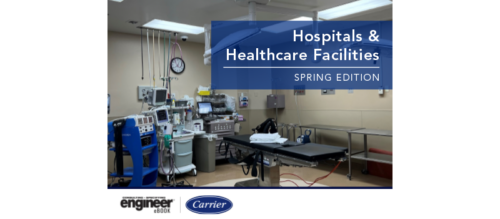Ducts are Covered at Utah Medical Center
St. George, Utah, set in the high desert in the southwestern portion of the state, experienced a 61% population increase over a five-year period in the 1990s. In the interest of keeping up with the town's rapid growth, the town's Dixie Regional Medical Center made the commitment to expand its services and space.
St. George, Utah, set in the high desert in the southwestern portion of the state, experienced a 61% population increase over a five-year period in the 1990s.
In the interest of keeping up with the town’s rapid growth, the town’s Dixie Regional Medical Center made the commitment to expand its services and space. By the end of the year, the regional referral center will occupy a 400,000-sq.-ft. facility, including a hospital and medical office building. In such an environment, increased indoor air quality (IAQ) is crucial.
“Following AIA guidelines for healthcare design, we must take into consideration patient comfort, the need for a sterile environment in the operating rooms, medical gas needs and proper humidification,” said Jeff Watkins, P.E., Van Boerum & Frank Associates (VBFA), Salt Lake City, the project engineer and a principal of the firm. VBFA was responsible for designing and specifying the HVAC system, as well as the plumbing, fire protection and medical gas systems.
Not only was humidification a factor because of the sensitive medical environment, St. George is in a semi-arid climate where summer temperatures average between 95° and 101°F, and HVAC systems in the area must be designed to maintain a minimum of 30% humidification. And with air handlers constantly feeding moisture into the air via humidification equipment, the medical center required a moisture-repellent duct liner.
The mechanical contractor, Western Sheet Metal, Salt Lake City, chose a manufacturer and installed 300,000 sq. ft. of its rotary-based fiberglass duct liner to protect 600,000 lbs. of sheet metal ductwork. A special surface is said to render the liner approximately 40% more moisture-resistant and also contains an antimicrobial agent to reduce the potential of microbial growth in the ductwork. Additionally, the surface helped to reduce concerns that moisture might enter ducts due to poorly sealed duct joints or improperly installed and maintained duct systems.
Do you have experience and expertise with the topics mentioned in this content? You should consider contributing to our CFE Media editorial team and getting the recognition you and your company deserve. Click here to start this process.


